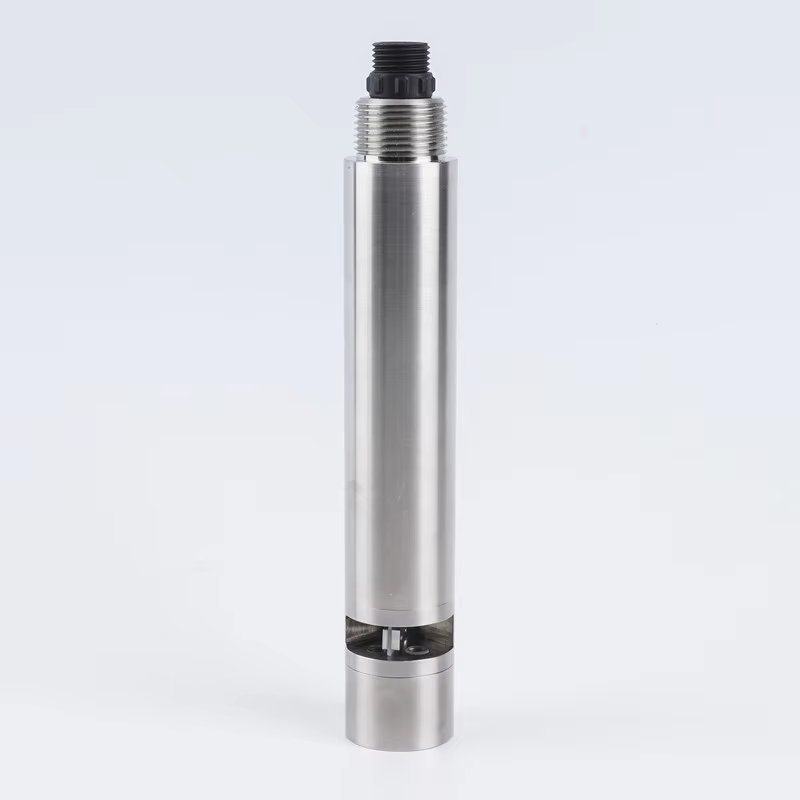1. Background
Vietnam, a key agricultural and industrial hub in Southeast Asia, faces severe water pollution challenges, particularly organic contamination (COD) and suspended solids (turbidity) in rivers, lakes, and coastal areas. Traditional water quality monitoring relies on lab sampling, which suffers from data delays, high labor costs, and limited coverage.
In 2022, Vietnam’s Ministry of Natural Resources and Environment (MONRE) deployed multi-parameter water quality sensors in critical water bodies across the Red River Delta and Mekong Delta, focusing on Chemical Oxygen Demand (COD) and Turbidity monitoring to enable real-time pollution alerts and source tracking.
2. Technical Solution
(1) Sensor Specifications & Features
- COD Sensor: Uses UV-Vis spectroscopy (no reagents required), real-time measurement (0-500 mg/L range, ±5% accuracy).
- Turbidity Sensor: Based on 90° scattered light principle (0-1000 NTU, ±2% accuracy), anti-biofouling design.
- Integrated System: Combines sensors with LoRa/NB-IoT wireless transmission, uploading data to a cloud platform with AI-powered pollution prediction.
(2) Deployment Scenarios
- Industrial discharge points (Bac Ninh, Dong Nai Provinces)
- Urban wastewater treatment plants (Hanoi, Ho Chi Minh City)
- Aquaculture zones (Mekong Delta)
3. Key Outcomes
(1) Real-Time Pollution Alerts
- In 2023, a sensor in Bac Ninh detected a sudden COD spike (from 30mg/L to 120mg/L), triggering an automatic alert. Authorities traced the source to a textile factory violating discharge regulations, leading to penalties and corrective action.
- Turbidity data helped optimize flocculant dosing in drinking water plants during monsoon silt surges, cutting treatment costs by 10%.
(2) Aquaculture Optimization
In Ben Tre Province, sensor networks dynamically adjusted aerators to maintain turbidity <20 NTU and COD <15mg/L, increasing shrimp survival rates by 18%.
(3) Long-Term Trend Analysis
Historical data showed a 22% decline in average COD levels (2022–2024) in sections of the Red River, validating Vietnam’s 2021–2030 Water Pollution Control Plan.
4. Challenges & Solutions
| Challenge | Solution |
|---|---|
| Biofilm buildup on sensors | Auto-cleaning brushes + quarterly calibration |
| Turbidity overload during floods | Infrared compensation mode activation |
| Unstable power in remote areas | Solar panels + supercapacitor backup |
5. Future Plans
- 2025 Target: Expand monitoring points from 150 to 500, covering 12 major river basins.
- Tech Upgrade: Pilot satellite remote sensing + ground sensor integration for large-scale pollution tracking.
- Policy Integration: Direct data sharing with Vietnam’s Environmental Police for faster enforcement.
6. Key Takeaways
Vietnam’s case demonstrates how COD-turbidity multi-sensor systems deliver significant value in industrial regulation, drinking water safety, and aquaculture, offering a cost-effective, real-time solution for developing nations.
We can also provide a variety of solutions for
1. Handheld meter for multi-parameter water quality
2. Floating Buoy system for multi-parameter water quality
3. Automatic cleaning brush for multi-parameter water sensor
4. Complete set of servers and software wireless module, supports RS485 GPRS /4g/WIFI/LORA/LORAWAN
For more water sensor information,
please contact Honde Technology Co., LTD.
Email: info@hondetech.com
Company website: www.hondetechco.com
Tel: +86-15210548582
Post time: Jul-28-2025


